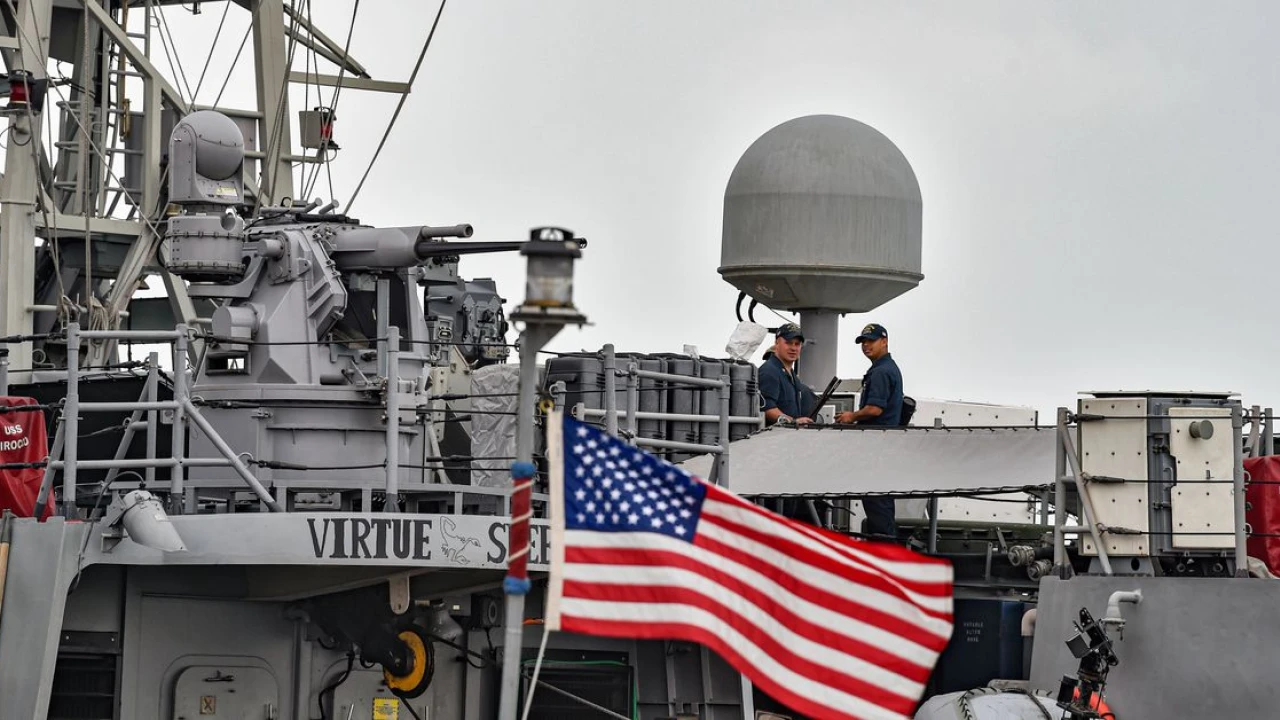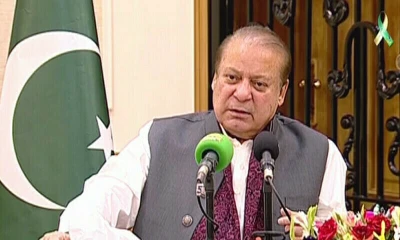Regional
Biden’s risky Persian Gulf bet
Biden’s risky Persian Gulf bet.

This week, thousands of US sailors and Marines landed in the Persian Gulf to pursue a widening mission to protect the strategic waterway, where about a quarter of the world’s oil passes daily.
For decades, the US has in effect guaranteed the security of the Gulf. But Secretary of Defense Lloyd Austin sent 3,000 Marines and sailors for a newly expanded role that, according to news reports, may include boarding US-flagged ships to escort them through the Strait of Hormuz in response to increased Iranian aggression.
“It would be a pretty pronounced change in the way the US polices the Gulf,” Gregory Brew, an oil historian and analyst at the Eurasia Group consulting firm, told Vox.
The deployment shows that, beyond securing the important energy route, the Biden administration wants to assert US power in the Middle East. With that comes risks, especially if the troops were to actually escort or even board commercial ships. The US did something similar during the Tanker War of 1987 to 1988, in which the Reagan administration reflagged Kuwaiti vessels and escorted them through the strait as a deterrent measure during the Iran-Iraq war — leading to intensive US involvement in the Gulf. That has culminated in the US military enlarging its massive footprint, with tens of thousands of troops in a network of bases throughout the Gulf. Now, the new operation could lock in an even bigger and more ensnared US military presence.
President Joe Biden’s administration says the threat Iran poses to international trade is serious enough to warrant the significant new deployment. “Since 2021, Iran has harassed, attacked or seized nearly 20 internationally flagged merchant vessels, presenting a clear threat to regional maritime security and the global economy,” Pentagon spokesperson Pat Ryder said recently. While Iran denies that it has been harassing ships, some analysts suggested its aggression is in response to US sanctions on Iranian oil exports.
More than 3,000 Sailors & Marines of the Bataan Amphibious Ready Group & 26th Marine Expeditionary Unit arrived in the Middle East, Aug. 6, as part of a pre-announced Department of Defense deployment.
Read more ⬇️https://t.co/H3fokPX1e0 pic.twitter.com/DC7Hpkju9h
The US is wading into a set of operations where many of the hottest and most complex geopolitical issues of the moment collide: energy prices, engagement with Iran, and China’s rising influence in the region. The most urgent concern may be the meaning of US troops serving as first-responders in situations of potential conflict.
The Biden administration hopes to defuse the tensions in the Gulf, but it could also exacerbate a dangerous, escalatory cycle with Iran that’s been festering since the Trump administration.
“We’re talking about using the lives of US service-members as a deterrent,” Emma Ashford, a researcher at the Stimson Center, told Vox. “The Biden administration is betting all on deterrence here. And that may well work, but it’s a bet.”
Why is the US doing this in the first place?
The 3,000 sailors and Marines arrived in the Middle East on August 6 alongside a deployment of US fighter jets to the region.
What exactly they’ll be doing isn’t yet clear: If US troops were to board commercial ships, the details would need to be worked out with the companies and countries in question. US officials told the Associated Press that such a policy is under consideration. (The Department of Defense did not respond to Vox’s questions for this story by press time.)
The Biden administration says that the Iranian threat to tanker traffic is the reason for the deployment of sailors and Marines. Iran seized two oil tankers in a week this past spring. Iran also intercepted a Tanzanian-flagged tanker on July 6, a day after the US Navy intervened to dissuade Iran from nearly seizing two ships. Iran has said that it sees itself as responsible for the security of the Gulf, not least because of its long coastline, and claimed it has not illegally seized tankers.
Other factors may be contributing to Biden’s decision-making: The US might be thinking about balancing China’s increased presence in the Middle East, as epitomized by the spring’s surprise rapprochement between Iran and Saudi Arabia. The US also might be responding to concerns from other partners in the region, especially as the US is pushing for Israel and Saudi Arabia to normalize relations. “The noise has increased a lot from Gulf partners, especially as the [Biden] administration is pressuring Gulf partners on a number of different issues, including normalization with Israel,” Simone Ledeen, who served as a senior defense official in the Trump administration, told Vox. “It’s certainly connected.”
Above all, Iranian actions in the Gulf could affect oil prices. For President Biden, keeping oil prices low has been a priority of utmost importance. It’s partly why he traveled to Saudi Arabia last summer to make up with Crown Prince Mohammed bin Salman bin Abdulaziz Al Saud. And since then, the Biden administration has sought to reassure Gulf partners like Saudi Arabia and the United Arab Emirates of US commitment to the Middle East.
This “forward-deployed presence provides US officials with options,” writes analyst Bilal Saab, that would make Iran “think twice before using violence to achieve its political aims.”
A more robust US presence in the Gulf might dissuade Iran from further seizures. But it won’t address the deeper, ongoing tensions.
The US has heavily sanctioned Iran’s oil exports since 2018, and the Trump administration sought to hold its exports at near zero. More recently, however, Iranian exports have doubled from last year to about 1.5 million barrels a day, much of it going to China. With more Iranian oil entering the market, the US has responded by seizing some of it. We don’t yet know if the new deployment means that the US now wants to ratchet up the enforcement of sanctions.
In some ways, Iranian oil entering the market has benefited the US. “The fact that the Iranians have been able to export a lot more oil in the last six months is a major reason why oil prices have been kept down,” Brew, the author of Petroleum and Progress in Iran, explains.
Brew says more attention must be paid to why Iran has been attacking vessels in the strait. “The reason they go after tankers, I think without exception, is in response to perceived provocations against their own oil exports,” he told Vox. “Each of these attempts to interdict Iranian oil then prompted an Iranian response against tankers in the Gulf. So the Iranians are doing this in response to US action.”
The risks: Tanker War 2.0
If this doesn’t stabilize the Gulf, where does it lead? For experts, the Biden policy recalls the Tanker War of 1987 to 1988.
Amid the Iran-Iraq War, the United States Navy entered the Persian Gulf to protect energy supplies as Iran and Iraq were targeting each other’s oil infrastructure. The US also wanted to assert its influence in the late Cold War moment as the Soviet Union’s petroleum production gave it significant power. Oil prices were spiking, and the US was still dependent on imports (and many NATO members were importers). So the US jumped into the fray and reflagged Kuwaiti tankers and then escorted them out of the strait.
When both sides believe the other will not risk military escalation the risks of military escalation increase. That's where we may right now in the current US-Iran naval confrontation. https://t.co/ttW9PZe5VF
— Dalia Dassa Kaye (@dassakaye) August 8, 2023It was a consequential policy change. Before that, few US troops were stationed in the region. Brew calls it “the beginning of major US military operations to secure the flow of oil in the Gulf.”
And the conflict expanded: In April 1988, the US launched Operation Praying Mantis against Iran. Three months later, the US shot down an Iranian civilian airliner and 290 people died.
Clearly, the context for this US deployment in the ‘80s is very different than today: The US isn’t trudging into an all out war.
But that history can teach us about the potential risks of US involvement. “Then as now, the US was looking at measures to effectively extend its defense umbrella over commercial shipping,” Brian Finucane, a former State Department lawyer now at the International Crisis Group, told Vox. “And so you could see a very similar set of legal issues being raised,” like whether a congressional vote would be needed should the current mission develop into something like 1987-88, when the US regularly engaged in hostilities against Iranian forces. “Are we going to see a replay — the executive branch, essentially taking the country to war, unilaterally, with Iran?” he added.
Even if that seems unlikely, a key question then is whether the Pentagon is introducing US service-members into an environment of imminent hostilities. Finucane is particularly concerned about Pentagon leaders potentially delegating authority to lower level personnel — like a US officer who may be escorting a vessel — and that they could engage in hostilities without sign-off from their boss.
That doesn’t mean that either the US or Iran want war. “The Iranians are generally very, very wary of shooting directly at US military personnel. They usually get proxies or third parties to do the shooting for them,” Brew says.
Nevertheless, the risks of escalation endure.
Ashford, the author of Oil, the State, and War, notes that it doesn’t seem that the US is talking to the Iranians at all, or considering other approaches to lower tensions. “Biden is basically going with the Trump maximum-pressure approach,” she told Vox. “We’re talking about putting Marines in harm’s way to try and deter Iran from attacking ships, because we’re not willing to look at any of the other political options.”
-

 Business 7 hours ago
Business 7 hours agoGold glitters again in Pakistan after surge in global markets
-

 Regional 23 hours ago
Regional 23 hours agoBomb blast in South Waziristan leaves one killed, five wounded
-

 Pakistan 1 day ago
Pakistan 1 day agoDETOXLAHORE a revolutionary step against smog in Punjab, for Lahore’s air quality
-

 Regional 13 hours ago
Regional 13 hours agoSibi by-election: PPP's Sardar Kohiyar Domki wins
-

 Pakistan 2 days ago
Pakistan 2 days agoCourt reserves verdict in Sharjeel Memon's assets case
-

 World 2 days ago
World 2 days agoTrump names Caroline Levitt as White House press secretary
-

 Pakistan 2 days ago
Pakistan 2 days agoPMLN govt is going in right direction, says Nawaz Sharif
-

 Pakistan 12 hours ago
Pakistan 12 hours agoUK court declares Hassan Nawaz bankrupt



























